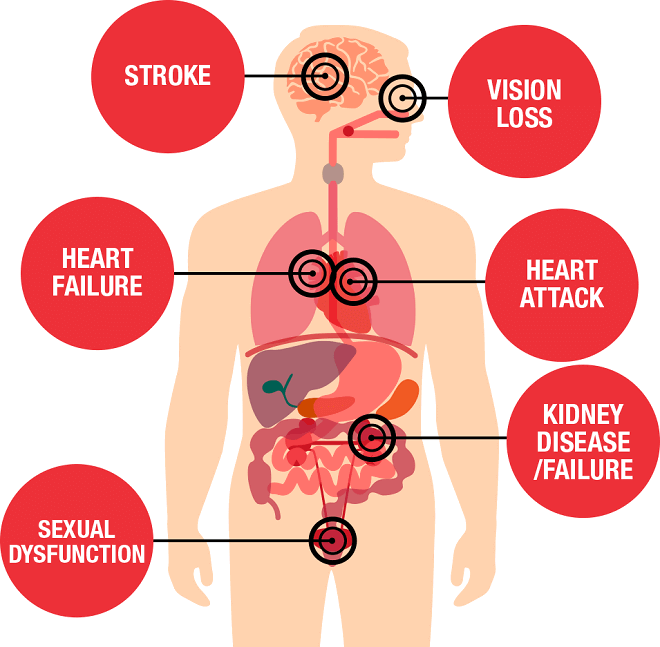10 Dangers of Enamel Hypoplasia

Enamel hypoplasia is a dental condition that affects the development and formation of tooth enamel, resulting in its inadequate thickness and quality. It can occur in both primary (baby) teeth and permanent teeth.
This condition can lead to various oral problems, such as increased tooth sensitivity, susceptibility to tooth decay, and compromised aesthetics. In the following text, we’ll look into the causes, symptoms, and treatment options for enamel hypoplasia.
What Causes Enamel Hypoplasia?
Like many other dental conditions, enamel hypoplasia can have multiple causes, each contributing to the disruption of enamel formation and subsequent inadequate enamel production. Understanding these causes is crucial for effective diagnosis and treatment of the dental condition.
One of the primary causes of enamel hypoplasia is genetic factors. Certain genetic conditions, such as amelogenesis imperfecta, can significantly impact enamel development. These conditions affect the enamel-forming cells, altering their ability to produce an adequate amount of enamel. As a result, the affected teeth have a thinner enamel layer, making them more susceptible to damage and decay.
Nutritional deficiencies during tooth development stages can also contribute to enamel hypoplasia. Malnutrition, specifically a lack of essential nutrients like vitamins A and D, calcium, and various proteins, can disrupt the normal process of enamel formation. Insufficient intake of these vital nutrients hampers the proper development and mineralization of enamel, leading to its inadequate thickness and quality.
Trauma or injury to the teeth, particularly during childhood, is another common cause of enamel hypoplasia. Physical trauma, such as a fall or accident, can directly impact the enamel-forming cells responsible for enamel production. The disturbance to these cells during the critical stages of tooth development can result in enamel hypoplasia.
Furthermore, severe childhood illnesses or infections can interfere with enamel development, leading to enamel hypoplasia. Conditions like high fever, measles, mumps, or congenital syphilis can have detrimental effects on the enamel-forming cells, disrupting the normal process of enamel formation. The enamel may be affected in terms of thickness, quality, or both, depending on the severity and duration of the illness or infection.

Symptoms and Signs of Enamel Hypoplasia
Enamel hypoplasia can manifest with various symptoms, which may vary in severity depending on the extent of enamel deficiency. Knowing this, the common signs and symptoms include:
- Pits and grooves: Teeth affected by enamel hypoplasia often have noticeable pits, grooves, or dents on their surfaces. These irregularities can trap food particles and make oral hygiene maintenance more challenging.
- Tooth discoloration: Affected teeth may exhibit discoloration, ranging from white or yellowish spots to brown or dark brown patches. The color variation occurs due to the thin enamel layer, which allows the underlying dentin to show through.
- Tooth sensitivity: Enamel hypoplasia can result in increased tooth sensitivity to hot, cold, and sweet foods and drinks. The damaged enamel fails to provide adequate insulation to the underlying dentin and nerves, leading to discomfort or pain.
- Higher risk of decay: Due to weakened enamel, teeth with enamel hypoplasia are more prone to tooth decay. The inadequate enamel layer cannot effectively protect the tooth from acid-producing bacteria and plaque buildup, increasing the risk of cavities.
How Can I Treat Enamel Hypoplasia?
Although enamel hypoplasia is a permanent condition, there are various treatment options available to manage its effects and improve dental health. The treatment plan may depend on the severity of the condition and the specific needs of each patient.
The first option is dental bonding. It involves applying tooth-colored resin to the affected teeth to fill in the pits, grooves, or irregularities. This procedure can enhance the appearance of the teeth, improve enamel protection, and reduce tooth sensitivity.
Next up, there are sealants. These are protective coatings applied to the chewing surfaces of teeth to create a barrier against plaque, bacteria, and acid erosion. They can be extra beneficial for people with enamel hypoplasia as they provide an added layer of protection.
Furthermore, there are professional fluoride treatments, including topical gels, rinses, or varnishes. They can help strengthen the enamel and reduce the risk of tooth decay. Regular fluoride applications can enhance enamel mineralization and protect teeth from acid attacks.
In severe cases of enamel hypoplasia, where the affected teeth are significantly compromised, dental crowns or veneers are another option. These restorations can provide both aesthetic improvement and functional protection to the affected teeth.
Preventing Enamel Hypoplasia and Maintaining Oral Health
As always, prevention is better than any cure. And in this case, preventing enamel hypoplasia involves ensuring proper nutrition, maintaining good oral hygiene practices, and minimizing the risk of dental trauma or infection.
Consuming a well-balanced diet rich in essential nutrients, including vitamins and minerals, is crucial for healthy tooth development. Hence, you should ensure an adequate intake of vitamin A, vitamin D, calcium, and protein.
On the other hand, adopting good oral hygiene habits, such as regular brushing with fluoride toothpaste, flossing, and visiting the dentist for routine check-ups, can help maintain optimal oral health and reduce the risk of tooth decay.
Another prevention tip is to take precautions to prevent dental injuries, especially during childhood. You should encourage the use of protective gear during physical activities and supervise children to minimize the risk of falls or accidents.
And lastly, if you notice any signs of enamel hypoplasia, such as tooth discoloration or irregularities, you should consult a dentist promptly. Early diagnosis and intervention can help manage the condition effectively and prevent further complications.
Get Rid Of Enamel Hypoplasia With Professional Fluoride Treatment
Maintaining oral health and preventing enamel hypoplasia are essential for strong teeth and a healthy smile. As such, you should consider a fluoride treatment at Millennium Dental to strengthen your teeth and protect them from decay.
Fluoride is a proven method that strengthens teeth, making them more resistant to plaque and decay. By strengthening the teeth’s surface, the likelihood of tooth decay and other dental problems decreases significantly.
The treatment is quick and easy, and it comes in different flavors. After application, a short waiting period is required before eating or drinking. Still, none of that is a task not worth taking if you’re looking to invest in the health of your teeth.

![How To Fix Worn-Down Teeth [Dentists' Guide] 5 How To Fix Worn Down Teeth Featured Image - Mr. BD Guide](https://mrbdguide.com/wp-content/uploads/2023/05/How-To-Fix-Worn-Down-Teeth-Featured-Image-Mr.-BD-Guide-390x220.jpg)


